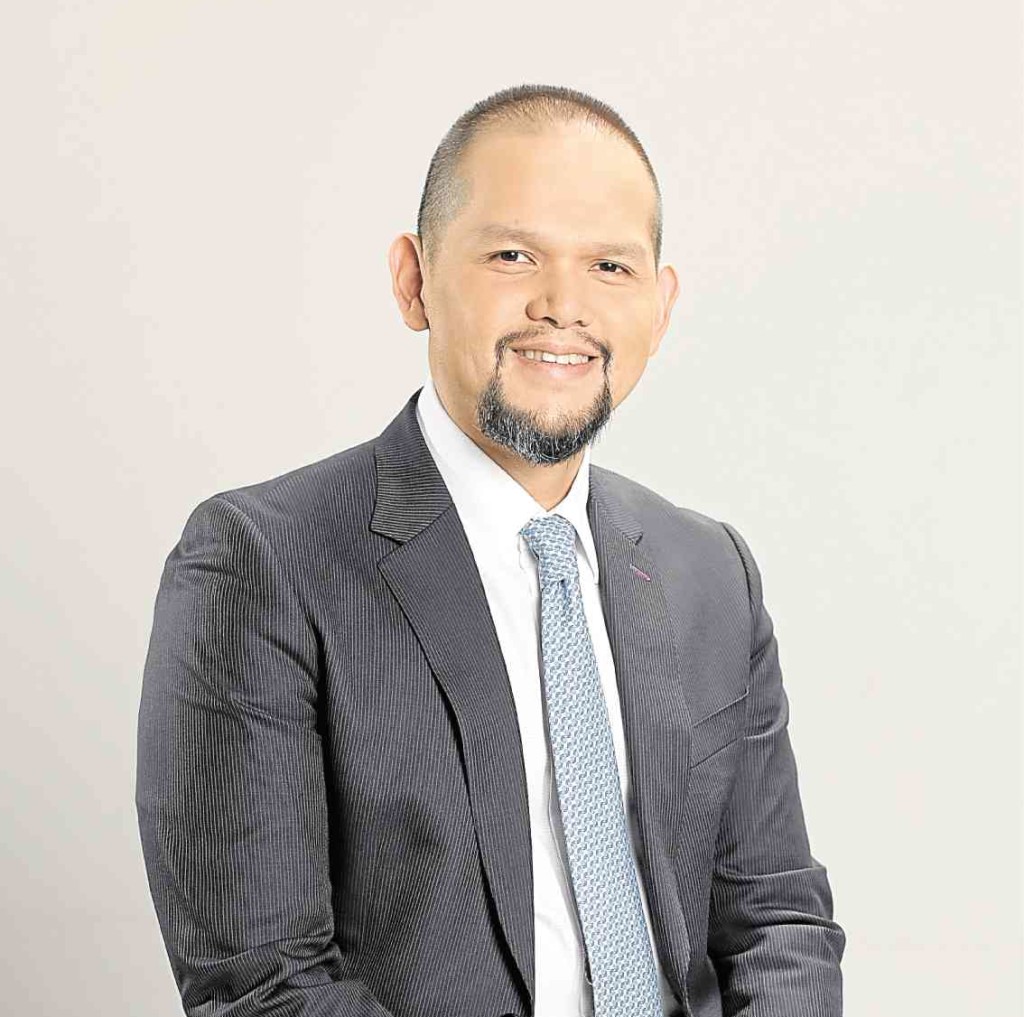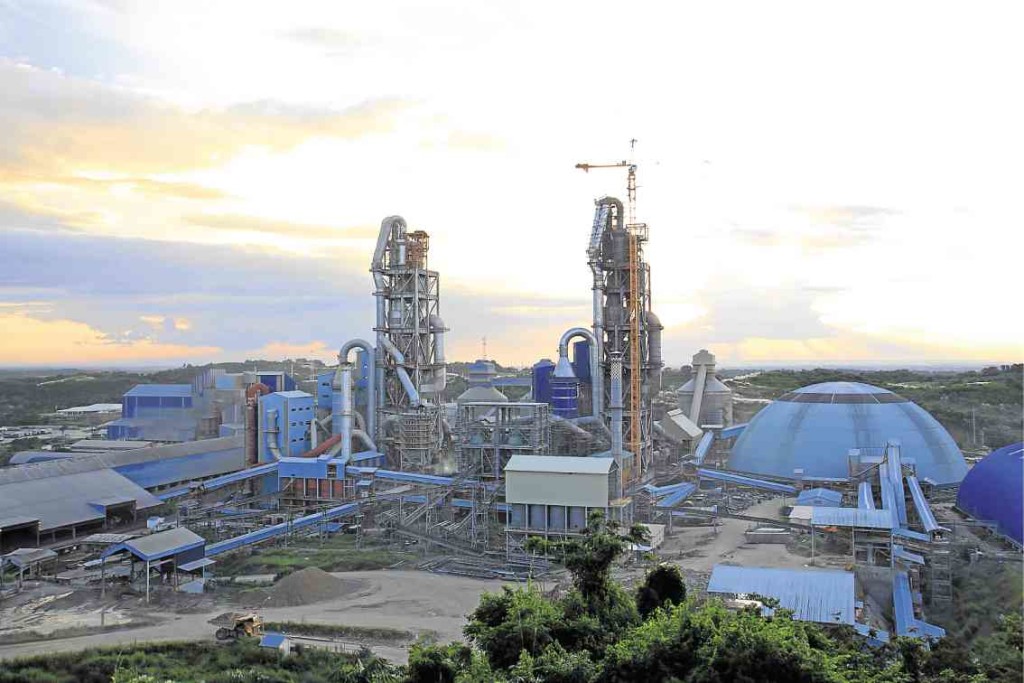Introducing Paul Ang, the next cement magnate
This young man is heir to a storied conglomerate, but he shuns the idea of working in any of its units or subsidiaries. He does not want to be a mere shadow of his successful dad.
At just 23, he left the country to take over a distressed Malaysian cement company, Sarawak Clinker. His dad bankrolled this acquisition, risking a few million US dollars so that his eldest child could learn all about running a business, particularly cement-making.
He stayed in Malaysia from 2003 to 2008, taking pride in experiencing the life of an overseas Filipino worker. He accomplished the tedious task of refinancing loans, upgrading the existing plant and growing business in a foreign territory. Once the cement firm turned the corner, it attracted suitors.
Sarawak was sold for $60 million, translating to a handsome profit that was in turn added to the equity of a new cement business that he would build from scratch in the Philippines.
Eldest son
Thus was how John Paul Ang—eldest son of San Miguel Corp.’s principal shareholder and president Ramon S. Ang—got initiated into the cement business. At 37, he is now a 15-year veteran in the cement business. When he talks about cement, he speaks with such passion and know-how that will most likely leave the audience impressed.
“Cement is like water. It’s always needed,” Paul says.
Cement is in his blood.
Long before his father became the business magnate that we all know today, a much younger Paul saw how his dad’s first foray into the cement business changed the fortunes of the family.
The elder Ang previously ran construction firms that built or repaired manufacturing plants, but eventually made the bold move of buying and upgrading Fortune Cement and taking it public. Fortune was eventually sold to multinational player LaFarge.
“Cement is a good business, as long as you know what you’re doing,” Paul says.
In 1995, Ang incorporated a new cement company called Eagle Cement Corp. He asked his kids what could be a good brand name for cement and Paul – then a teenager—picked the name of that glorious bird of prey. That was his first contribution to this enterprise.
But it would take many years more from incorporation for Eagle to fly.
Ang bought the 200-hectare complex in Barangay Akle, San Ildefonso, Bulacan, which includes a limestone-rich area. The quarrying site has 300 million metric tons (MT) of mineral reserves which can fuel three cement production lines for half a century.
Ang applied for the environmental compliance certificate and mineral production sharing agreements (MPSA). But it was Paul who was on ground zero to build the production lines. He started the construction of the first cement production line in 2008 right after his OFW stint. Eagle started selling to the market in 2010 and the rest is history.
Last year, Eagle booked P4.11 billion in net profit on the back of P13.27 billion in net sales. Cash flow amounted to P6.3 billion. In the last five years, the company has grown by an average of 25 percent each year. Its net profit margin of over 30-percent is higher than the mid-teen norm in the industry.
Eagle is now the fourth biggest cement manufacturer in the country after the three large multinational players Lafarge Holcim, Republic (CRH/Aboitiz) and Cemex.
Because its production lines are newer and employ more efficient technology, Paul says while enjoying higher-than-industry margins, Eagle sells its cement at a lower price—typically P2 cheaper per bag. While average selling price of cement in Manila is around P200 per bag, Eagle sells for around P198 per bag.
Paul says Eagle helped temper cement prices in Luzon.
“We have the youngest machines, the biggest and most efficient plant and the leanest organization,” he says. Furthermore, Eagle doesn’t employ general contractors and instead directly manages the many suppliers and contractors—a more tedious but at the same time more cost-efficient way of dealing with its supply chain.
Autonomous
Paul—who holds an Inter-Disciplinary Studies degree (management and economics track) from Ateneo de Manila—was employee #1 of Eagle Cement, which now has 350 employees. He runs a group of engineers and CPAs (certified public accountants). He also proudly notes that he has the highest ratio of women engineers at 20 percent among peers.
Although Eagle is family-owned, Paul notes that it’s a professionally-run organization, with only four family members involved. Apart from his father who chairs the company and Paul who is president and chief executive officer, Paul’s 28-year-old sister Monica is chief finance officer (she joined the business six years ago) and the chief operating officer, Manny Teng, is a cousin, a chemical engineer who joined in 2009.
Ang, as a father, expects his children “to know and work” and to “learn by observing.” Once out in the field, they are expected to know what they are doing, Paul says.
Paul says Eagle went through serious birth pains. In the beginning, it was difficult to hire people because Eagle was then an unknown brand and the company was to operate in a far-flung location.
“It was hard. I was turned down a few times. I even visited [prospective employees] in their house but they still refused,” he says.
“A lot of people I meet, people my age, they don’t like this business. Even the new graduates normally don’t like it because it’s difficult, too far away and it involves large machinery. It’s not a glamorous job. Normally, what other people don’t like, that’s what I want,” he says.
Paul built a house right beside the manufacturing hub in Barangay Akle, San Ildefonso, Bulacan. Travel to and from Metro Manila takes about three hours so to make the most of his time, he lived there from 2008 to 2015, staying from Tuesdays to Fridays and going home only during the weekends through Mondays.
After all, his father told him he must be willing to live where he intended to work.
He met his wife Tala Fernando on the job. The daughter of Bayani and Marides Fernando, Tala was then pitching a project for her family’s construction business. Paul thought she was cute and told her not to be his supplier anymore as he would like to court her. They are now parents to two kids.
The production hub in Bulacan is the single biggest cement manufacturing complex in the country to date, produces about 5.1 million metric tons (MT) or 130 million bags of cement per year.
Eagle is putting up a third production line in Bulacan, which is due for completion in 2018. This will increase its cement production capacity by two million MT or about 50 million bags a year.
By 2018, the upgrading of the Bulacan hub will bring total production capacity to about 7.1 million MT or about 180 million bags per year. The company also runs a grinding and packaging facility in Limay, Bataan which can process 12 million bags of cement per annum.
“Some people assume that my business grew big because of San Miguel, because it’s building the NAIA Expressway, (SLEX-NLEX) connector road and all that, but San Miguel only accounted for 1 percent of our annual revenues,” Paul says.
“Everything we sell to wholesalers and the majority of our customers are big bulk buyers like MDC (Makati Development Corp.) and Filinvest. We also sell to SM, EEI, DMCI,” he adds.
How much independence does Ang give to Paul?
“Maximum,” he stresses. “He doesn’t sign anything. It’s all me. Then, we have board meetings, which used to be held annually but are now quarterly.”
But Ang, of course, provides the strategic guidance.
“If he wants to expand, then we follow but in terms of what machine to buy, who to sell our cement to, he doesn’t interfere,” Paul says.
Room to grow
Eagle will soon start building a new P12.5-billion cement plant in Cebu, which will have a two-million MT annual capacity. The Cebu facility will include a manufacturing plant, a distribution center and marine terminals.
The construction of the cement plant is estimated to start in the fourth quarter of this year while completion is targeted by the first quarter of 2020.
That means that soon, Paul will have to set up residence in Cebu.
“We are the only ones building new capacity and we’ve proven we can build capacity at a certain price range. I gain courage every time I hear a competitor talking about building new capacity at a certain price,” Paul says.
At present, current cement consumption in the country has exceeded what can be produced locally, Paul notes.
As of December 2016, the Philippine cement industry has an estimated annual clinker and cement capacity of 20.6 and 28.63 million tons, respectively, based on nameplate capacities of integrated cement manufacturing and grinding plants in the country.
With rising infrastructure and expanding economy, Paul expects per capita consumption of cement in the Philippines will catch up with that of regional peers.
Based on 2014 figures, Paul notes that Philippine cement per capita consumption was only 212 kilos, nearly the bottom-dweller in Southeast Asia, beating only Myanmar, which consumed 152 kilos of cement per capita. Even Vietnam, Laos and Cambodia had higher per capita consumption of 524, 435 and 241 kilos, respectively.
For its part, Eagle Cement currently distributes its products only in Luzon, which accounts for about 65 percent of total cement demand in the Philippines.
Paul says it will be a new challenge for him to enter the Vis-Min market.
Stock debut
Eagle has aspirations to become an even bigger player in the local cement industry, challenging the top three multinational players. With its initial public offering (IPO), it seeks to boost funds for fresh expansion. While existing capacity-building program can be funded by its cash flow, Eagle wants to have enough leeway in case there’s opportunity to expand through acquisitions or to enter new businesses like producing aggregates or other related building materials.
In short, Eagle wants to play a bigger role especially now that the country may enter a “golden age of infrastructure.”
After 15 years of building this business, Paul is ready to transform Eagle Cement into a public company.
From May 16 to 22, Eagle is offering 500 million primary common shares with an over-allotment option of up to 75 million secondary shares at P15 a share, allowing the company to raise as much as P8.62 billion to oil its growth story and giving it a market capitalization of P75 billion upon listing.
It is poised to list on the main board of the PSE on May 29 under the ticker symbol “EAGLE.”


